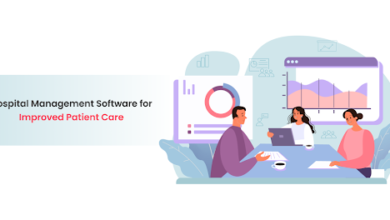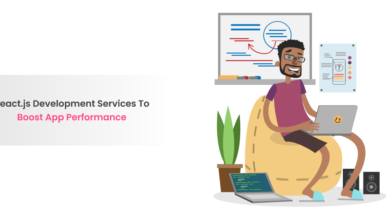Java: Powering the Future of Learning Management Systems

In the rapidly evolving world of educational technology, Learning Management Systems (LMS) have become a foundational component in delivering structured education. These systems provide an integrated platform for managing all aspects of the learning process, from administration to documentation, tracking, reporting, and delivery of educational courses or training programs. The success of an LMS hinges on its ability to be robust, scalable, and secure, catering to the needs of a diverse and growing population of learners. Java, with its unparalleled stability, extensive library support, and inherent security features, emerges as the programming language of choice for developing sophisticated LMS platforms that can stand the test of time and technology advancements. In this guide, we will delve into the key aspects of Java that make it an indispensable tool in revolutionizing LMS development.
Why Java for LMS Development?
Java’s significance in the realm of LMS development is grounded in several critical aspects that cater specifically to the needs of modern educational platforms. Firstly, Java’s platform independence allows developers to create applications that can run on any device or operating system, which is crucial for educational institutions aiming to provide accessible learning opportunities across various devices. Secondly, Java’s robust security features ensure that user data, especially sensitive information such as student records and payment details, remains protected from cyber threats. This is paramount in maintaining the trust and confidence of the users. Thirdly, the language’s mature ecosystem, encompassing a vast array of libraries and frameworks, facilitates the integration of advanced features such as AI for personalized learning experiences, and AR/VR for immersive educational content. Lastly, Java’s scalability supports the growing demand for LMS platforms to accommodate an increasing number of users and resources without compromising performance. These attributes solidify Java’s position as a professional, reliable, and forward-looking choice for LMS development.
Key Components of an Educational LMS
An effective LMS must cater to various stakeholders—students, educators, and administrators—through a comprehensive set of components:
- User Management enables the creation, customization, and management of user profiles, facilitating a personalized learning experience.
- Course Management allows educators to create, modify, and deliver educational content, assignments, and assessments seamlessly.
- Content Delivery and Interactivity enhances learning through multimedia materials and interactive tools, making education engaging and accessible.
- Assessment and Testing features provide the means for tracking progress and evaluating the effectiveness of the learning materials and teaching methodologies.
- Data Analytics and Reporting tools offer insights into learning patterns, course completion rates, and overall effectiveness, enabling data-driven decisions.
- Collaboration and Communication Tools foster a community of learners, allowing students and educators to interact through forums, chats, and video conferencing. This promotes a rich learning environment where ideas and knowledge can be shared freely.
- Accessibility and Inclusivity Features ensure that the LMS is usable by individuals with varying abilities, supporting different learning styles and accommodating various disabilities to provide an equitable learning experience for all.
- Security and Privacy measures protect sensitive information from unauthorized access and ensure compliance with educational standards and regulations, safeguarding the trust of users and maintaining the integrity of the platform.
Architectural Patterns for LMS in Java
The adaptability of Java to various architectural patterns makes it ideal for building scalable and maintainable LMS platforms.
- The MVC (Model-View-Controller) pattern is widely used for developing web applications, allowing separate development, maintenance, and testing of each component.
- Microservices architecture enables the development of highly scalable and flexible LMS platforms, with each service running independently yet working together as a cohesive system.
- An API-centric design enhances integration capabilities with third-party tools, systems, and plugins, ensuring a rich learning ecosystem.
- Event-driven architecture facilitates real-time communication and updates between different components of the LMS, providing a seamless and responsive user experience.
- The layered architecture divides the application into different layers, separating concerns and improving scalability, maintainability, and testability.
- A service-oriented architecture (SOA) allows for modular and interoperable services that can be independently upgraded or replaced, increasing flexibility and adaptability to changing technological requirements.
- Cloud-based architecture enables easy scalability, high availability, and cost-efficiency by utilizing cloud computing resources for hosting and managing the LMS platform.
Java Frameworks and Tools for LMS Development
To harness the versatility and efficiency of Java in LMS development, several frameworks and tools are significantly favored for their robustness, ease of use, and comprehensive support.
- Spring Framework, particularly renowned for its dependency injection feature, enhances modularity and allows for more manageable and decoupled code, making it an excellent choice for service-oriented architecture.
- Hibernate, as an ORM (Object-Relational Mapping) tool, simplifies database operations and interactions, providing a more intuitive way to handle persistence in Java applications, aligning well with the layered architecture.
- Apache Struts, another compelling choice for web application development, supports the MVC pattern by separating the application’s state (model), interface (view), and logic (controller), thereby promoting a well-organized development process.
- Maven and Gradle are indispensable tools for managing project dependencies, build processes, and automating workflows, ensuring efficient and reproducible builds which are essential for maintaining a complex LMS platform.
- JUnit and Mockito offer comprehensive testing capabilities to ensure high-quality, robust applications. JUnit facilitates unit testing, whereas Mockito assists in mock testing, enabling developers to write efficient and reliable tests for their Java applications.
- Docker and Kubernetes provide exceptional support for deploying and managing containerized Java applications, aligning with microservices architecture to enhance scalability and simplify the deployment process across different environments.
Ensuring Security in Java-based LMS Platforms
Security is paramount when developing any web app in Java, particularly for Learning Management Systems (LMS) which handle sensitive educational data and personal information. Ensuring the security of these platforms involves a multifaceted approach. Firstly, it’s essential to adhere to best practices in securing the application layer against various vulnerabilities such as SQL injection, cross-site scripting (XSS), and cross-site request forgery (CSRF). Utilizing frameworks like Spring Security can significantly aid in this effort by providing robust authentication and authorization mechanisms. Furthermore, employing SSL/TLS for data in transit and applying encryption for data at rest are critical steps in safeguarding against data breaches and unauthorized access. Regular security audits and compliance with standards such as OWASP’s Top Ten are also indispensable strategies in mitigating potential security threats to Java-based web applications.
Conclusion
In conclusion, developing Java-based Learning Management Systems (LMS) requires a thorough understanding of both the language’s strengths and the ecosystem of tools that enhance its efficiency, from development to deployment. By leveraging frameworks and tools such as Spring, Hibernate, JUnit, Mockito, Docker, and Kubernetes, developers can optimize the performance, scalability, and reliability of their LMS platforms. Furthermore, prioritizing security through practices like employing Spring Security, utilizing SSL/TLS, encryption, and adhering to security standards ensures the protection of sensitive data, fostering trust among users. With these strategies, Java remains a powerful choice for creating robust, secure, and scalable LMS platforms that cater to the evolving demands of the digital education sector.
Read More:





